Overview
The article delineates various efficient methods for looking up property records, underscoring the significance of accurate title research in real estate transactions. It highlights the necessity of leveraging technology and comprehensive resources to overcome common challenges. Key strategies include:
- Utilizing advanced search features in digital interfaces
- Employing machine learning tools for data extraction
- Accessing historical documents from repositories
Furthermore, these approaches not only enhance accuracy but also streamline the research process, ultimately reinforcing the reliability of the solutions offered.
Introduction
In an age where real estate transactions are increasingly complex, the ability to efficiently access and interpret property records has never been more crucial. This article delves into the best strategies for navigating the labyrinth of property documentation, offering insights into advanced technologies and methodologies that can streamline the research process. As the landscape of property ownership evolves, professionals must ensure they remain ahead of the curve while safeguarding their investments.
Parse AI: Advanced Machine Learning for Title Research Automation
harnesses advanced machine learning algorithms to from document titles. By efficiently processing substantial volumes of records, it dramatically reduces the time and effort typically required for . This automation not only but also enables researchers to concentrate on more complex tasks, thereby in real estate transactions.
Furthermore, industry experts note that the integration of such technology is revolutionizing the field, allowing professionals to achieve and . As Franklin D. Roosevelt aptly stated, "Real estate cannot be lost or stolen, nor can it be carried away. Purchased with common sense, paid for in full, and managed with reasonable care, it is about the safest investment in the world." This underscores the importance of , which is one of the best ways to look up property records, in securing valuable real estate investments.
The impact of machine learning on research efficiency is profound, as it transforms how real estate experts manage and evaluate asset documentation. Consequently, title researchers should consider exploring machine learning tools like Parse AI to enhance their efficiency and effectiveness.
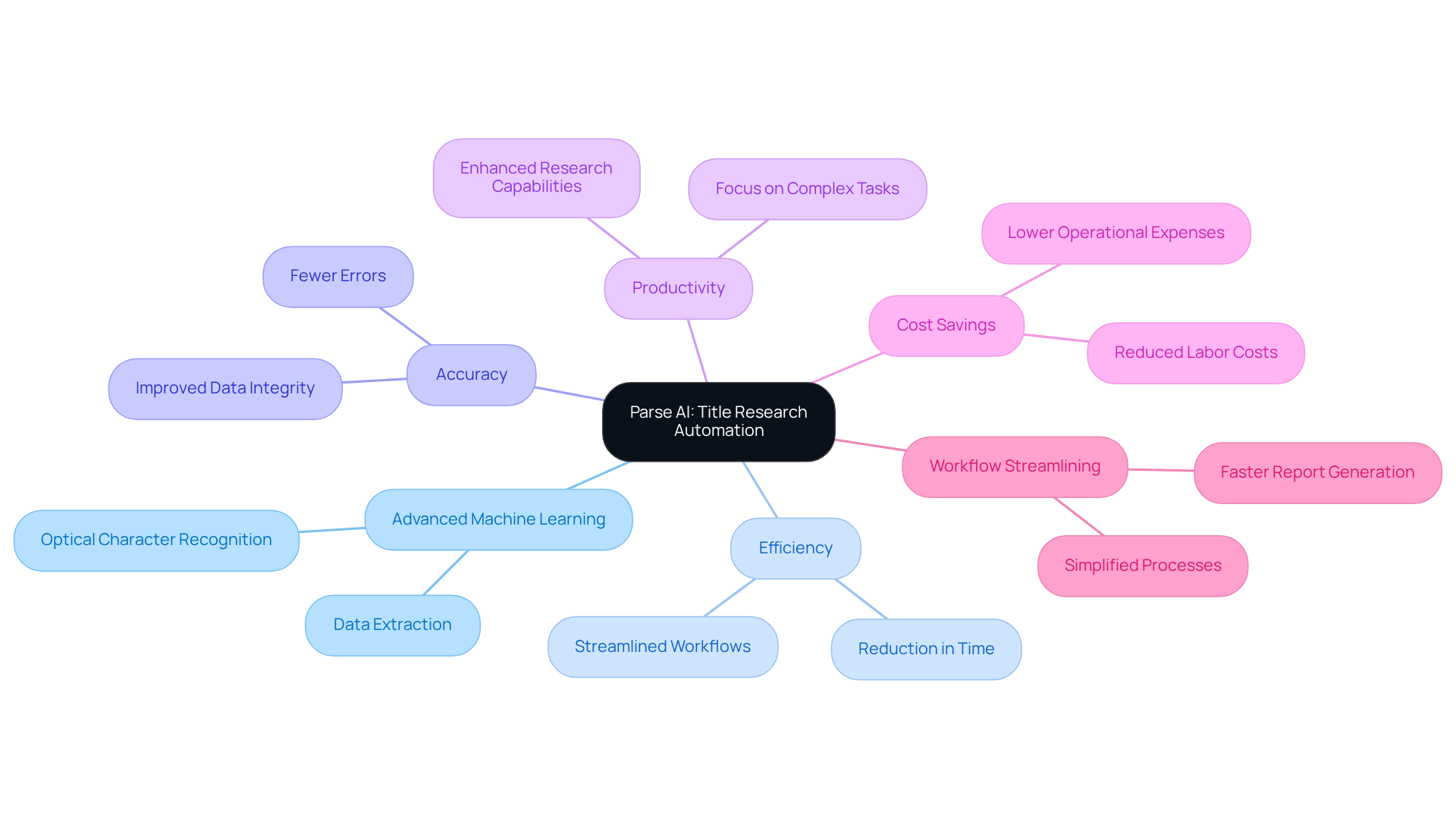
Digital Interface for Searching Comanche County Clerk Records: Features and Advanced Search Capabilities
The provided by the Comanche County Clerk is designed with user-friendliness in mind, showcasing the best ways to through advanced search features that significantly . Users can filter results based on various criteria, including:
- Category type
- Owner name
- Document type
This sophisticated capability allows to swiftly locate pertinent documents, thereby minimizing the time spent on manual inquiries and improving the accuracy of their findings. As digital search technologies continue to evolve, identifying the is becoming essential for professionals seeking to optimize their workflows and boost overall productivity in real estate research.
Furthermore, with ongoing , including the establishment of new housing units and job opportunities in areas like the Bel-Red subarea, discovering the best ways to look up property records is increasingly crucial. Title investigators must also stay informed about , such as the integration of in , which can further enhance search efficiency.
However, it is vital to remain vigilant regarding potential challenges, such as data accuracy and the necessity for continuous updates to the digital interface to align with the evolving needs of users.
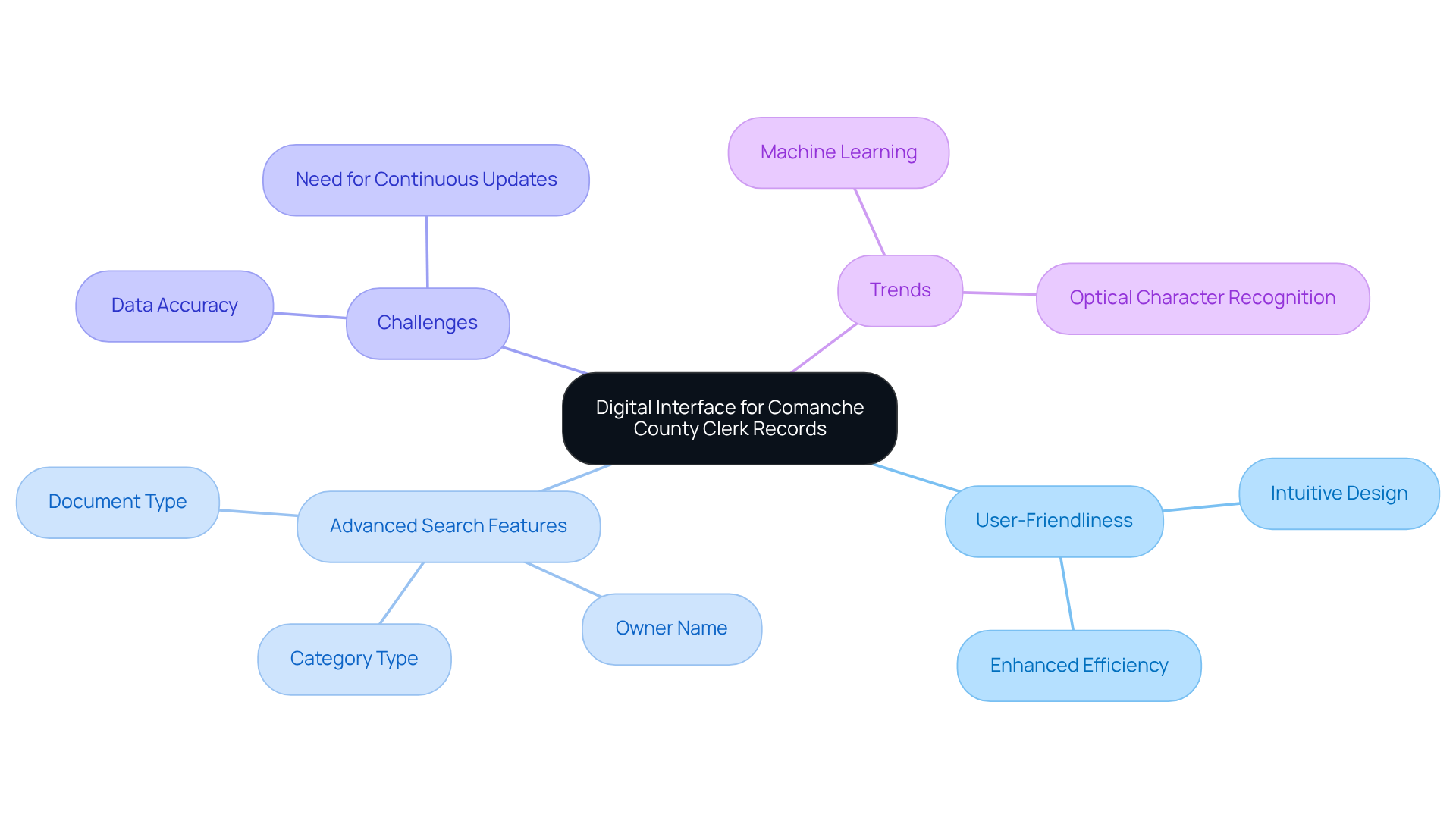
Automated Document Processing for Landmen: OCR Technology and Interactive Labeling
through revolutionizes how landmen handle scanned documents by converting them into machine-readable formats. This advancement significantly accelerates the , enabling those studying titles to swiftly obtain essential information. Furthermore, the integration of interactive labeling empowers users to annotate documents, thereby enhancing reference capabilities and facilitating a more streamlined workflow. By , researchers can concentrate their efforts on data analysis rather than manual entry, resulting in quicker and more accurate searches.
As industry leaders emphasize, the shift towards automated document processing not only enhances efficiency but also transforms the overall approach to title research, allowing professionals to focus on . Notably, , such as 'Informed Consumer' and 'CollectIQ,' further bolster this efficiency, addressing the challenges of verifying real estate ownership.
As Anne Valaitis articulates, document processing has long posed a bottleneck for businesses, making the transition towards automation essential for overcoming these inefficiencies.
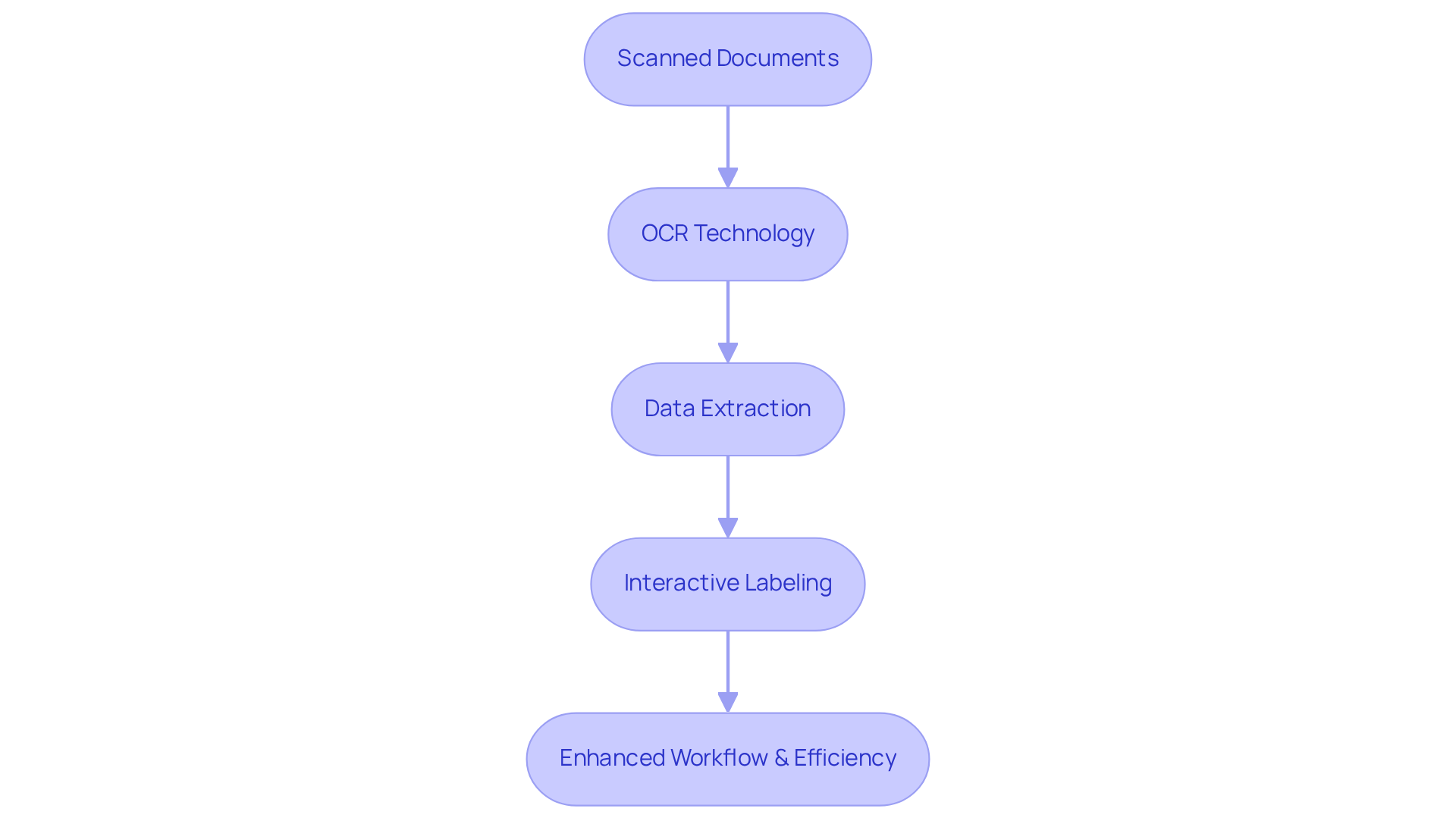
National Archives Land Records: Essential Historical Data for Title Verification
The that are crucial for confirming real estate ownership. This collection includes land entry case files, mineral rights paperwork, and historical maps, all of which deepen the understanding of property transactions. Notably, the Homestead Act of 1862 significantly influenced land ownership trends in the U.S., making these documents indispensable for property examiners. By leveraging these resources, the , meticulously tracing ownership histories and revealing any potential claims or encumbrances.
Furthermore, it is essential to as they are some of the best ways to look up property records to ensure a thorough title examination. This comprehensive approach not only safeguards against future disputes but also enhances the overall integrity of real estate transactions. regarding that could impact ownership of the asset. encompasses not just retrieving these documents but also cross-referencing them with local collections, thereby creating a complete overview of ownership.
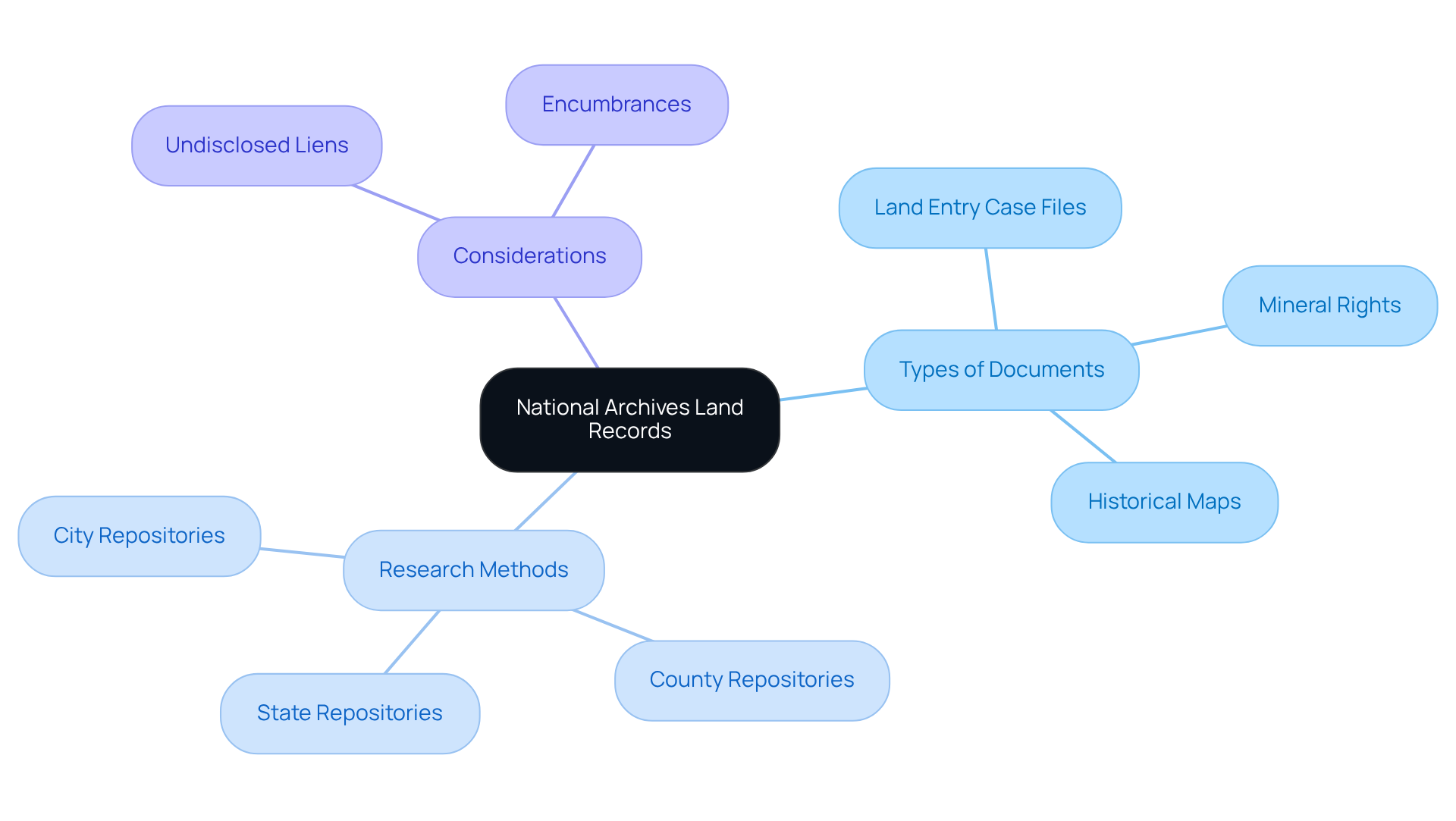
National Archives UK Research Guides: Structured Methodologies for Locating Property Records
The National Archives UK provides comprehensive research guides that highlight the best ways to and outline . These guides provide meticulous instructions on the best ways to look up , including such as property deeds and land registration papers. By adhering to these methodologies, title researchers can adeptly navigate the complexities of land documents in the UK, ensuring they gather all necessary information for accurate title verification.
Notably, the registration of , signifying a pivotal shift in asset management. Furthermore, ownership documents can be , with diverse enrolment practices evolving over the centuries. The Enclosure documents, which gained greater comprehensiveness post-1845, provide additional context for understanding land histories.
Additionally, the Discovery catalogue boasts an impressive 32 million entries, enhancing the research process and empowering professionals to track asset histories with greater precision and effectiveness.
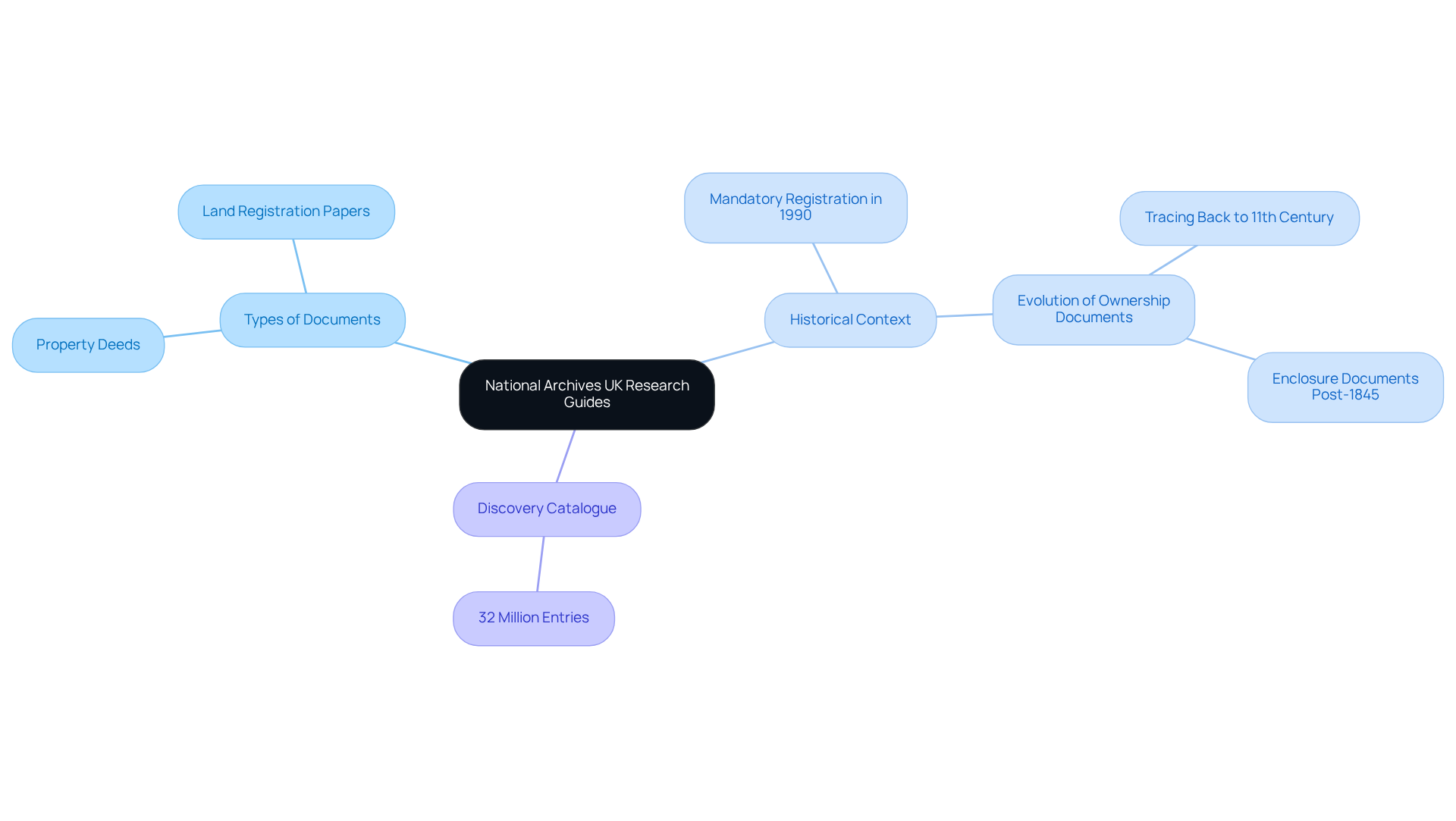
Preservation Tips from Saving Places: Maintaining Historical Property Records
Maintaining is crucial for ensuring the accuracy of . The recommendations from Saving Places highlight several effective strategies:
- Storing files in climate-controlled environments
- Utilizing acid-free materials for physical documents
- Digitizing materials to guarantee
By implementing these , can safeguard vital historical information that may prove essential for future .
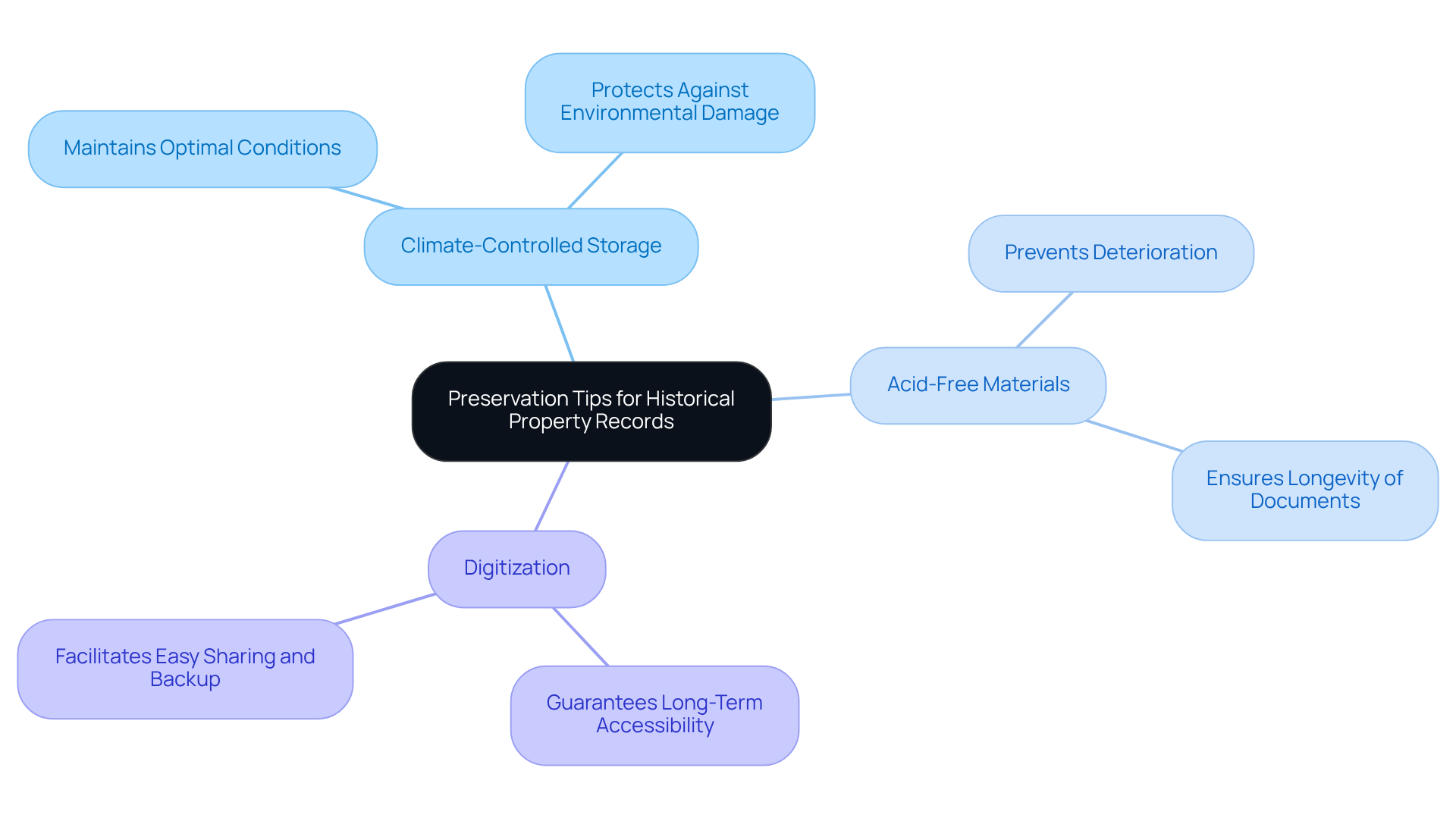
Texas State Library Property Research: Tools and Guidance for Title Researchers
The Texas State Library offers a comprehensive suite of tools and guidance that represent some of the best ways to look up . This includes access to , legal documents, and specialized research databases. Accurate is essential, and title scholars can greatly and precision by attending workshops and utilizing .
For instance, the (TLTA) offers over 80 on-demand programs through its Online Learning Center, equipping professionals with the necessary skills to navigate complex property searches.
Furthermore, by employing —such as full-text search, machine learning extraction, and interactive labeling— and interpretation. This ensures that all relevant information is thoroughly considered, ultimately in Texas.
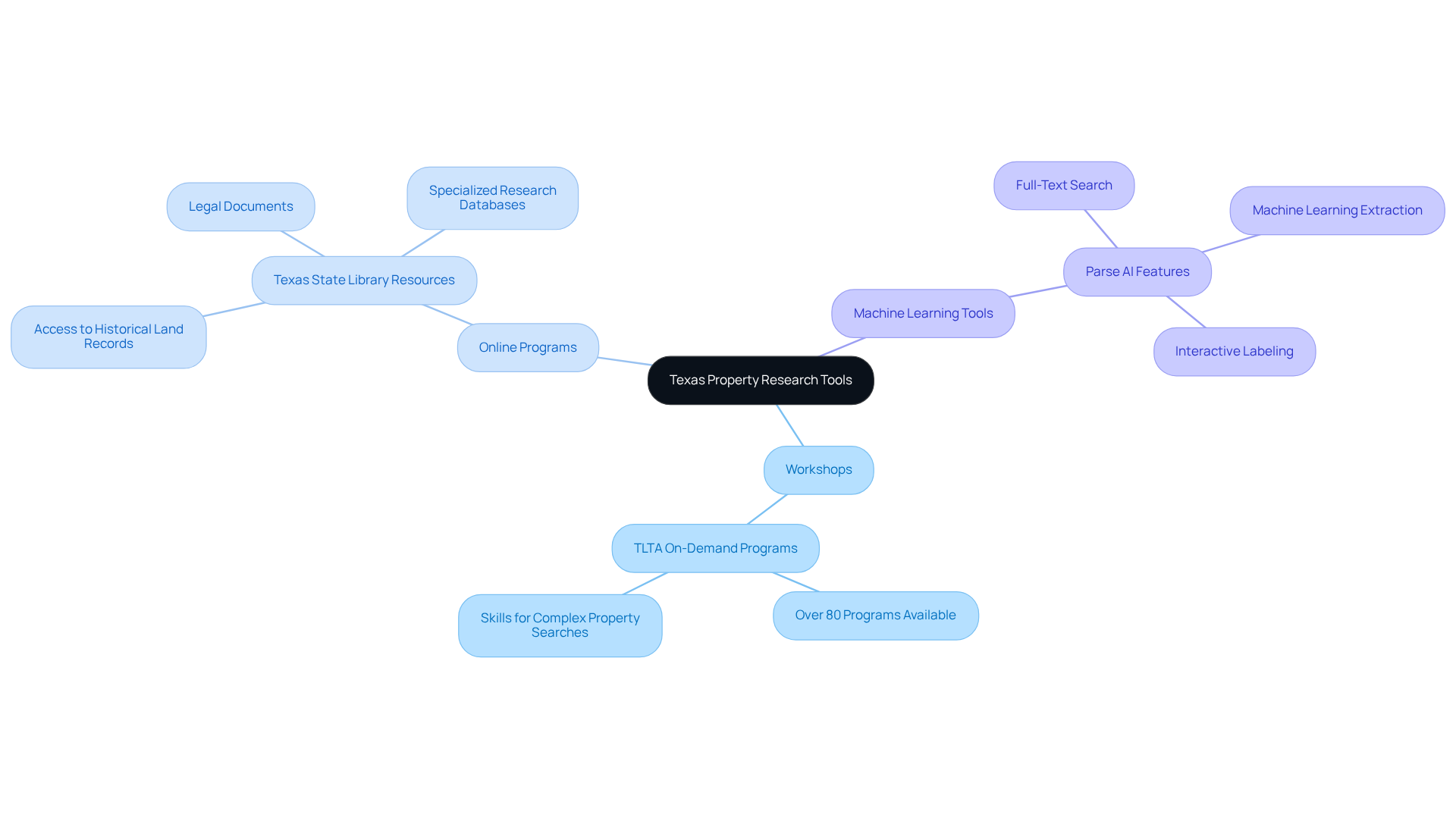
Census Records: Demographic Insights for Understanding Property Ownership Trends
Census records provide essential demographic information that is vital for understanding ownership trends. By analyzing data on , population demographics, and housing characteristics, researchers can cultivate a nuanced understanding of the market landscape. For instance, the U.S. reveal shifts in community dynamics, significantly impacting and ownership trends. This information is crucial for making and assessing potential risks associated with . As evolve, such as the increasing prevalence of multigenerational households and the aging baby boomer demographic, grasping these elements becomes imperative for those aiming to navigate the complexities of the real estate market effectively.
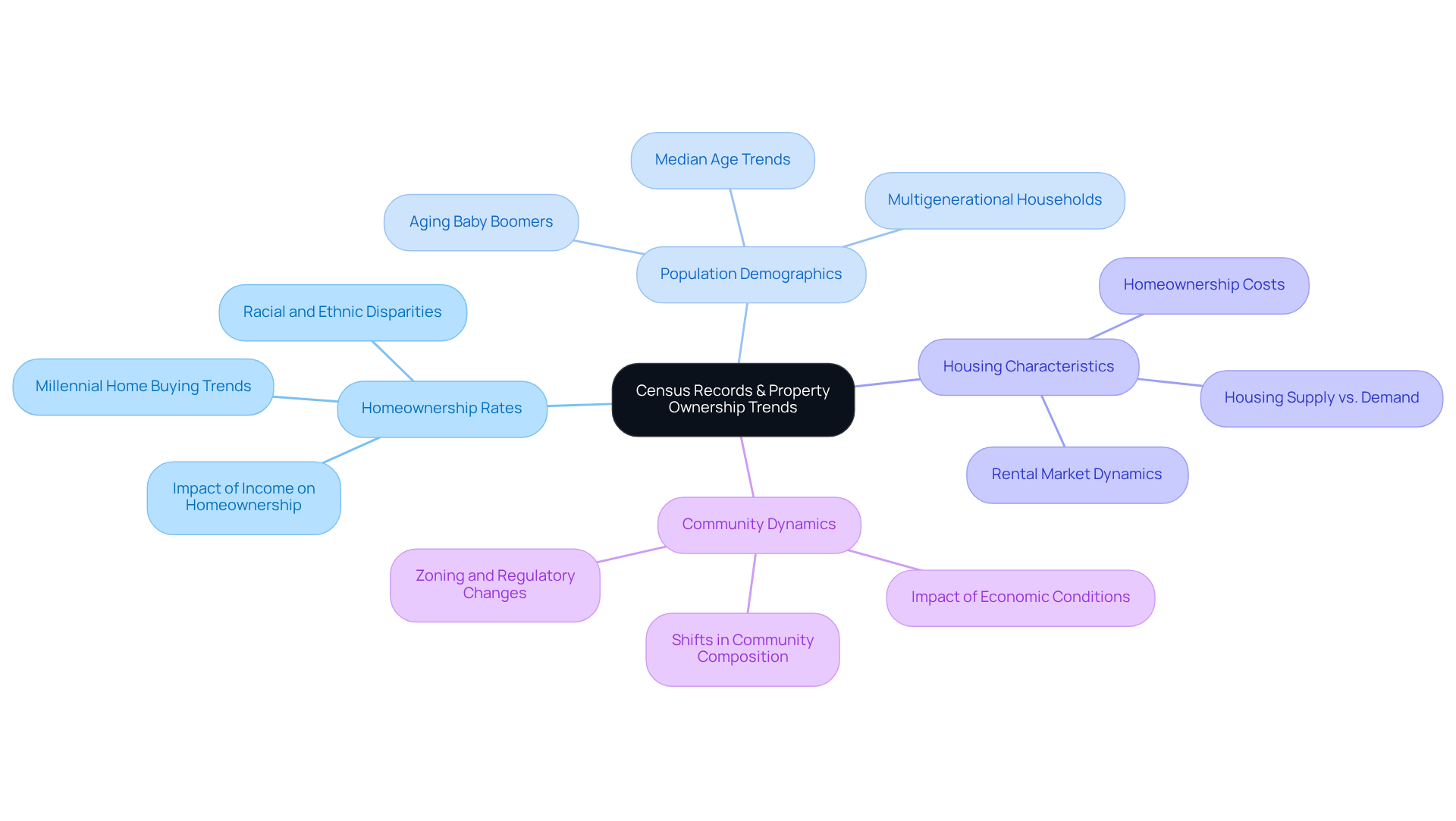
Title Deeds: Understanding Their Structure and Significance in Property Research
Deeds are vital documents that confirm ownership of real estate, making their comprehension crucial for ownership researchers. The key elements of deed documents include:
- The grantor (the seller)
- The grantee (the buyer)
- The legal description of the land
- Any encumbrances such as liens or easements
Each of these elements plays a significant role in determining the rights associated with the property. For instance, the , while encumbrances can indicate potential issues that may hinder ownership transfer. Legal specialists stress that a is essential for reducing risks in real estate transactions. As pointed out by legal specialist Gary Green, " is and preventing future conflicts."
By carefully examining these elements, investigators can reveal inconsistencies or assertions that could affect asset ownership, thus ensuring a clear ownership record for future dealings. Furthermore, is essential for continually advancing the comprehension and administration of deed documents, improving the effectiveness of property research. To apply this knowledge effectively, researchers should regularly review and update their and implications, ensuring they remain informed about best practices in the field.
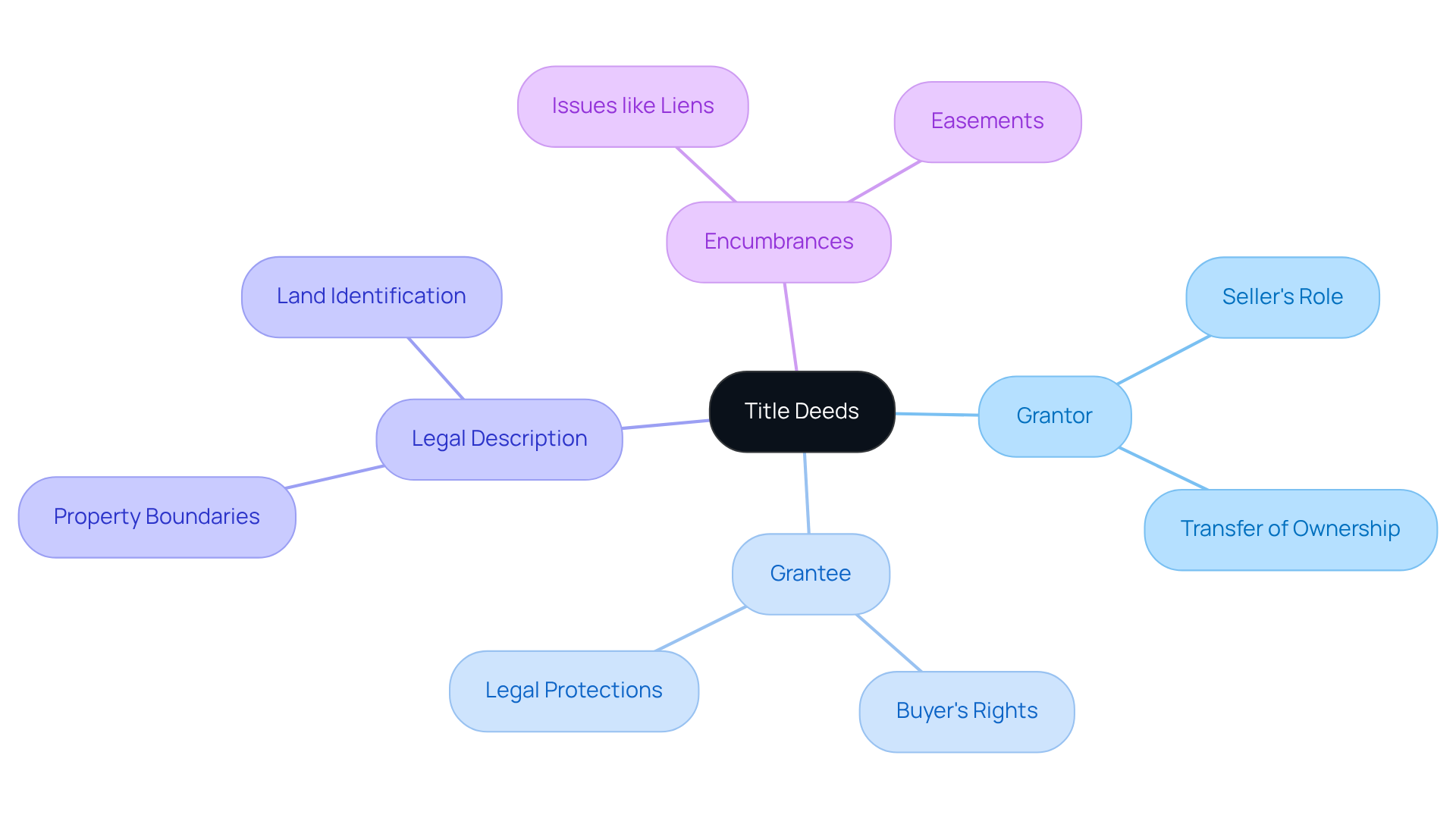
Building Plans (Mid-19th Century Onwards): Architectural Insights for Title Researchers
Construction designs from the mid-19th century onward provide invaluable architectural insights that significantly enhance . These plans reveal , , and adherence to . By meticulously examining these documents, can cultivate a deeper understanding of a property's history. This understanding is essential for and identifying potential legal issues, thereby reinforcing the reliability of the solutions offered.
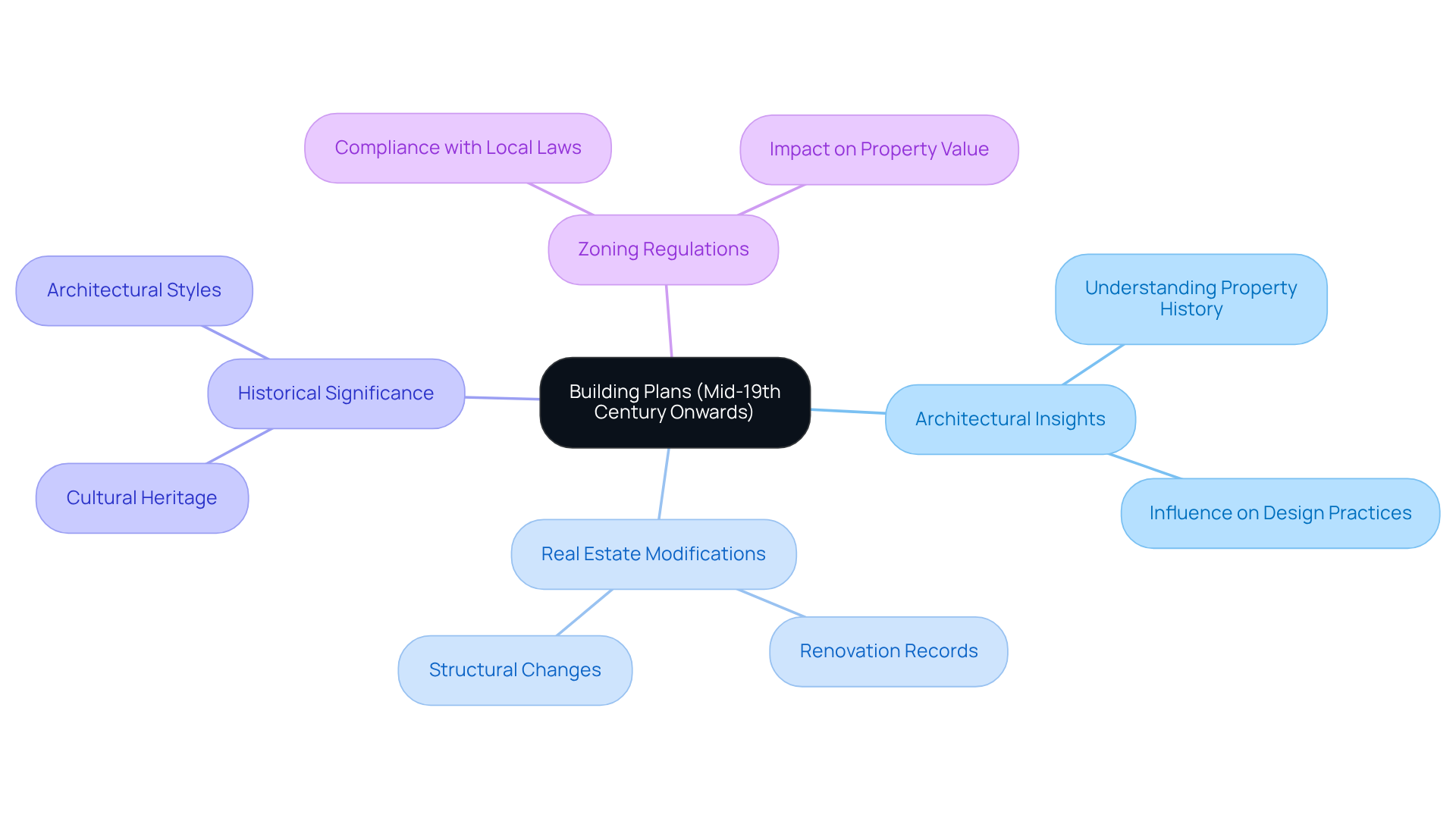
Conclusion
The exploration of efficient methods for looking up property records unveils a transformative landscape, propelled by technology and systematic approaches. By leveraging advanced tools such as machine learning and OCR technology, real estate professionals can significantly enhance their research capabilities, ensuring accurate and timely results. This integration of technology not only streamlines workflows but also empowers researchers to concentrate on higher-value tasks, ultimately leading to more informed real estate transactions.
Key insights from the article underscore the importance of utilizing resources like:
- The Comanche County Clerk's digital interface
- The National Archives
- The Texas State Library
Each of these sources offers unique features and methodologies that can drastically improve the efficiency of property record searches. Furthermore, understanding the structure and significance of title deeds, along with demographic trends from census records, equips researchers with the knowledge necessary to navigate the complexities of property ownership.
As the real estate landscape continues to evolve, embracing these best practices and advanced technologies is essential for professionals aiming to secure clear and reliable ownership records. By prioritizing effective property research, stakeholders can safeguard their investments while contributing to the integrity of the real estate market as a whole.
Frequently Asked Questions
What is Parse AI and how does it benefit title research?
Parse AI is an advanced machine learning tool that automates the extraction of essential data from document titles, significantly reducing the time and effort required for ownership research. This automation enhances accuracy and allows researchers to focus on more complex tasks, thereby boosting overall productivity in real estate transactions.
How does machine learning impact research efficiency in real estate?
Machine learning transforms how real estate experts manage and evaluate asset documentation, improving efficiency and effectiveness in property research. It enables professionals to streamline workflows and achieve significant cost savings.
What features does the digital interface for Comanche County Clerk records offer?
The digital interface is designed for user-friendliness and includes advanced search capabilities that allow users to filter results based on category type, owner name, and document type. This enhances the efficiency of real estate searches and improves the accuracy of findings.
Why is it important for title researchers to stay informed about current trends in property record systems?
Staying informed about trends, such as the integration of machine learning and optical character recognition, is crucial for title researchers to optimize their workflows and enhance search efficiency, especially in light of ongoing urban development initiatives.
How does Optical Character Recognition (OCR) technology benefit landmen?
OCR technology revolutionizes how landmen handle scanned documents by converting them into machine-readable formats, accelerating the data extraction process. This allows researchers to obtain essential information quickly and focus on data analysis rather than manual entry.
What are the advantages of automated document processing in title research?
Automated document processing enhances efficiency by allowing professionals to concentrate on higher-value tasks, resulting in quicker and more accurate searches. It addresses the challenges of verifying real estate ownership and transforms the overall approach to title research.
What specific functionalities of Parse AI enhance research efficiency?
Parse AI includes functionalities like 'Informed Consumer' and 'CollectIQ,' which bolster efficiency in title research by addressing challenges related to verifying real estate ownership and streamlining document processing.




